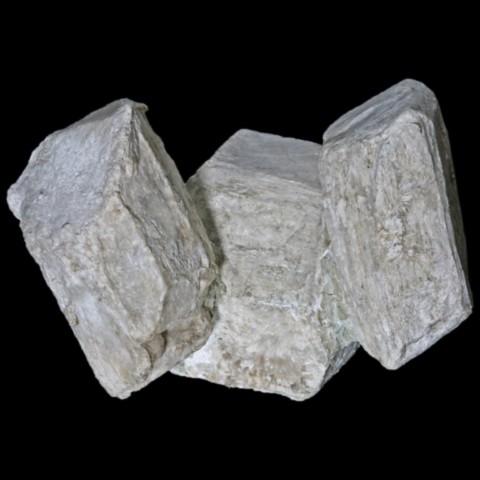ULEXITE
Class : Carbonates, nitrates, borates
Subclass : Borates
Crystal system : Triclinic
Chemistry : NaCaB5O6(OH)6 5H2O
Rarity : Fairly common
Ulexite is, like most borates, a mineral formed by evaporation of salt lakes in a desert environment. The waters of these lakes contain large quantities of borated brines linked to volcanic emanations. In its deposits, ulexite is associated with many salts, notably borax, halite and gypsum. Its alteration by hydration leads to secondary borates, the most common of which is colemanite. It was named in honor of the German chemist George Ludwig Ulex who established the first exact analysis. Ulexite is exceptional in crystals and usually occurs in characteristic fibroradiated spherical nodules, with a silky and snow-white luster. These nodules are made up of a tangle of very fine acicular crystals and can reach several centimeters in diameter. Ulexite also forms large white masses, or contiguous aggregates of parallel fibers evoking transmission fibers and known as "television-rock" or "TV-stone". Ulexite is an important boron ore, some particularly aesthetic specimens can have a destiny as a fine gemstone after a cabochon cut.
Main photo : Ulexite from Rio Tinto, Boron, California, USA © Rock Currier
Ulexite in the World
Twinning
Polysynthetic twins are known on {010} and {100}.
Fakes and treatments
No fakes listed for this mineral species. May hard to differenciate from fibroux gypsum (selenite).
Hardness : 2.5
Density : 1.96
Fracture : Irregular
Streak : White
TP : Translucent to transparent
RI : 1.491 to 1.520
Birefringence : 0.028
Optical character : Biaxial +
Pleochroism : None
Fluorescence : Yellow, green, white
Solubility : Water
Magnetism : NoneRadioactivity : None





